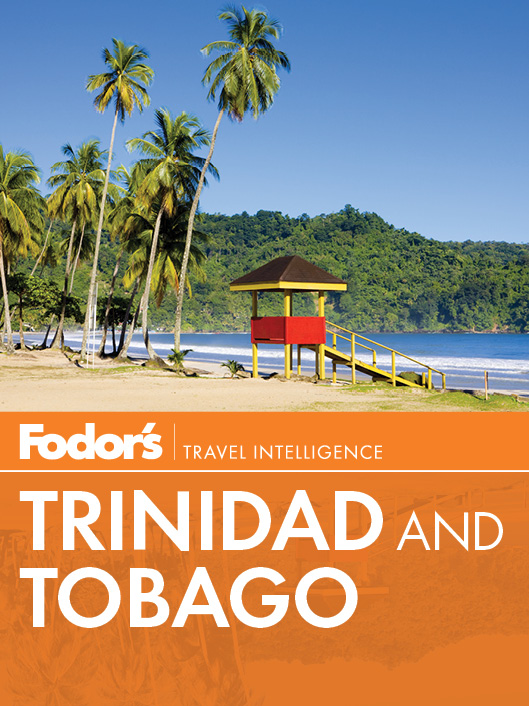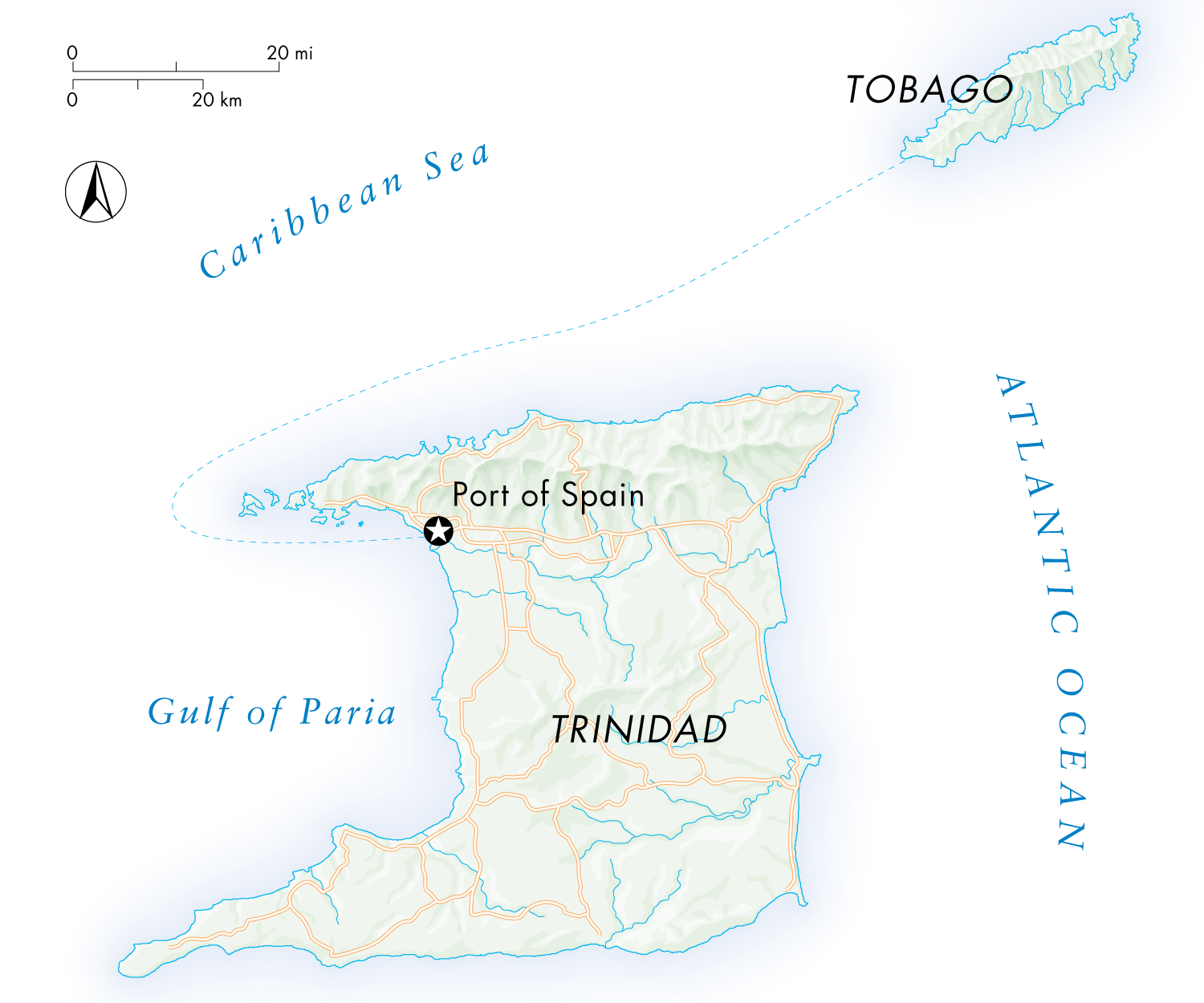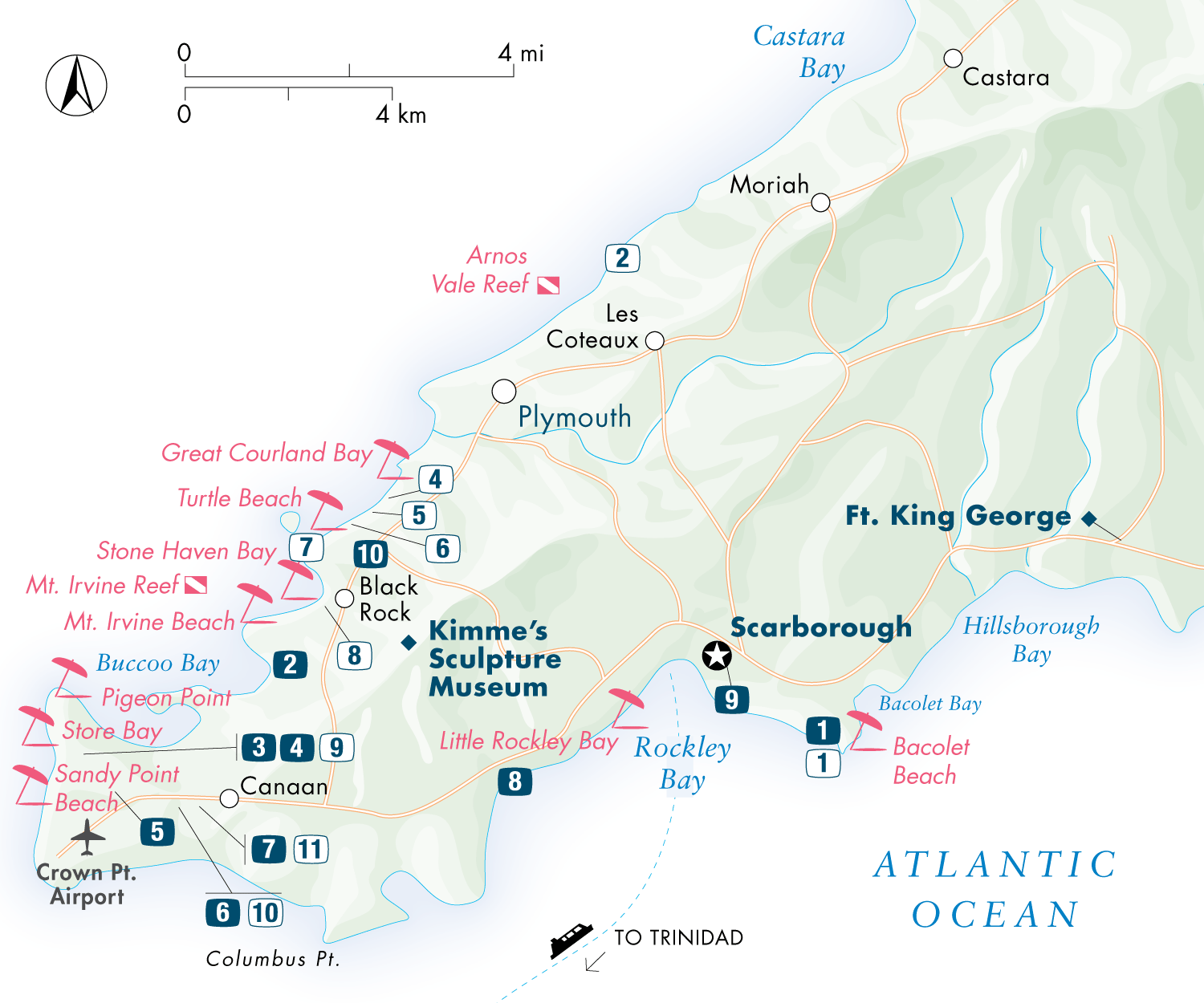WELCOME TO TRINIDAD AND TOBAGO
Updated by Vernon OReilly-Ramesar
These lush islands lay claim to being the economic powerhouse of the Caribbean. Vast oil and gas reserves have led to a high standard of living, where tourism is not the mainstay of the economy. Indeed, the word tourist is seldom mentioned here; the preference is for the much friendlier visitor. Trinidads Northern Range is thought to be part of the Andes in South America (connected to the mainland as recently as the last Ice Age). This geological history helps explain why the range of flora and fauna is much greater than on other Caribbean islands.
The two islands have very different histories. Sadly, the Amerindian populations of both islands were virtually wiped out by the arrival of Europeans. After Columbus landed in Trinidad in 1498, the island came under Spanish rule. In an attempt to build the population and provide greater numbers to fend off a potential British conquest, the government at the time encouraged French Catholics from nearby islands to settle in Trinidad. This migration can be seen in the large number of French place-names scattered around the island. Despite this effort, the British conquered the island in 1797.
Tobago had a much more turbulent history. Named after the tobacco that was used by the native Amerindian population, it was settled by the British in 1508. The island was to change hands at least 22 times before eventually returning to Britain in 1814.
The two islands were merged into one crown colony in 1888, with Tobago being made a ward of Trinidad. Independence was achieved in 1962 under the leadership of Dr. Eric Williams, who became the first prime minister. The islands became an independent republic in 1976 with a bicameral Parliament and an appointed president.
Trinidads capital city, Port of Spain, is home to some 300,000 of the islands 1.3 million inhabitants. Downtown Port of Spain is a bustling commercial center complete with high-rise office buildings and seemingly perpetual traffic. Happily, the northern mountain range rises just behind the city and helps to take much of the edge off the urban clamor.
Much of the charm of Trinidad lies in the ethnic mix of the population. The majority of the population is of either African or East Indian backgroundthe descendants of African slaves and indentured East Indian laborers, who came to work the plantations in the 19th century. The island is always buzzing with a variety of celebrations and arts performances that can range from African drumming to classical Indian dance. The national cuisine has also absorbed the best of both cultures. Although these two groups compose more than 80% of the population, other groups such as the French, Spanish, Chinese, and even Lebanese have left their mark.
Many of the art forms that are considered synonymous with the Caribbean were created on this relatively small island. Calypso was born here, as were soca, limbo, and the steel pan (steel drum). The island can also claim two winners of the Nobel Prize in LiteratureV. S. Naipaul (2001), who was born in Trinidad and wrote several of his earlier books about the island, and Derek Walcott (1992), a St. Lucian who moved to Trinidad in 1953. Many tourists make a pilgrimage simply to trace the places mentioned in Naipauls magnum opus, A House for Mr. Biswas.
Physically, the island offers an exact parallel to the rain forests of South America, which allows for interestingand sometimes challengingecological adventures. Beach lovers accustomed to the electric blue water and dazzling white sand of coral islands may be disappointed by the beaches on Trinidad. The best beaches are on the north coast, with peach sand, clean blue-green water, and the forest-covered Northern Range as a backdrop. Beaches are almost completely free of hotel development.
Tobago is 23 mi (37 km) northeast of Trinidad. The population here is much less ethnically diverse than that of Trinidad, with the majority being of African descent. Tobagonians have their own dialect and distinct culture. Tourism is much more a part of the islands economy, and you can find excellent resorts and facilities. Tobago also has pretty white-sand beaches.
TOP ATTRACTIONS
Trinidads Carnival is the Caribbeans biggest and best party, but nightlife is hopping the rest of the year, too.
Both Trinidad and Tobago are major bird-watching destinations; Trinidad itself has more resident species than any other Caribbean island.
A melding of many cultures means lively festivals year-round and excellent multicultural cuisine.
The steel pan was invented in Trinidad, and excellent bands play all over the island.
GETTING ORIENTED
The two-island republic is the southernmost link in the Antillean island chain, some 7 mi (11 km) off the coast of Venezuela, but Tobagos Main Ridge and Trinidads Northern Range are believed to represent the farthest reaches of the Andes Mountains. Trinidad is a large petroleum and natural-gas producer. Tiny Tobago is known more for its quiet atmosphere and gorgeous, wild beaches.
Restaurants
Hotels
Beaches
Hotels
Beaches
Restaurants
Hotels
Beaches
TRINIDAD AND TOBAGO PLANNER
DRIVING TIPS
Major highways are good, but bumper-to-bumper traffic is the norm during large parts of the day, and smaller roads can be in poor condition. During the rainy season roads often flood. Never drive into downtown Port of Spain during afternoon rush hour (generally from 3 to 6:30), when traffic is at its heaviest. In Tobago, many roads, particularly in the interior or on the coast near Speyside and Charlotteville, are bumpy, pitted, winding, and/or steep.
SAFETY
Travelers should exercise caution in Trinidad, especially in the highly populated eastwest corridor and downtown Port of Spain, where walking on the streets at night is not recommended unless youre with a group. As a general rule, Tobago is safer than its larger sister island. There is little visible police presence in most areas of Trinidad. Petty theft occurs on both islands, so dont leave cash in bags that you check at the airport, and use hotel safes for valuables.
GETTING TO TRINIDAD AND TOBAGO
Hassle Factor: Medium to high.
Flights:
There are nonstops to Trinidad from Houston (Continental), Miami (American, Caribbean Airlines), New YorkJFK (American, Caribbean Airlines), and New YorkNewark (Continental). There are no nonstop flights to Tobago from the U.S.; to get to Tobago, you will have to hop over from Trinidad on LIAT or Caribbean Airlines.
Local Airline Contacts:
American Airlines ( 868/6644661 ). Caribbean Airlines ( 868/6251010 or 868/6693000 ). Continental Airlines ( 800/4612744 ). LIAT ( 868/6272942 or 868/6231838 ) or Caribbean Airlines.














